Waymo Drops Comprehensive Self-Driving Safety Assessment, Tries to Educate Public
Autonomous cars have the unique capability to captivate the public’s imagination while simultaneously making them feel uneasy after considering things on a more practical level. A handful of self-driving related accidents, inconsistent development timetables, and a hands-off regulation strategy haven’t helped. But there is a sense that if the populace had a better handle on what went into making the technology work safely, some of their fears would be put to rest.
This week, Waymo — the relatively quiet autonomous vehicle arm of Alphabet Inc. — made an attempt to do just that. While also making a case for itself and the need for self-driving cars, the company released a 42-page outline of how its autonomous systems function. Written without a lot of technical jargon, the reading remains comprehensive and is one of the best attempts we’ve seen from a company to educate the public — rather than dazzle them with lofty promises.
Tesla Recalls 11,000 Model X SUVs Over Uncooperative Rear Seats
Tesla is issuing a voluntary recall of the Model X before the government can whip out its red pen. The company claims a small percentage of SUVs suffer from a manufacturing defect that could prevent the rear seats from locking into place securely.
The risk comes in the event of a crash, when the center row — and those occupying it — could become projectiles aimed squarely at the back of the driver’s seat.
Sorry, Canadians - You'll Still Lose Your Driver's License for Being Tipsy in a Rowboat
Some might quibble over where “the limit” should be when we’re talking drunk driving — 0.05, 0.08, 0.10 — but few responsible people would argue against the need for impaired driving legislation. Until smartphones and other distracting electronic accoutrements came along, boozy drivers were the leading cause of carnage on the roads.
Now, many of us our personal vehicle to drive to the lake, the seaside, or perhaps a nearby river, where our boat, be it large or small, awaits. Maybe it’s a canoe or kayak. Maybe — because cabin cruiser dollars are hard to come by — it’s an inflatable mattress or inner tube where you can use your feet for propulsion.
Well, if you reside north of the border and were thinking of popping a few beers and paddling about in your human-powered floatation device (after hearing Canada’s recent announcement that drunk driving laws would no longer apply to unmotorized boats), think again. Special interest groups have intervened, and that law will remain on the books.
Drunk paddling? There goes your Chevrolet.
AAA Study Finds Infotainment Systems Dangerously Distracting
Automobiles are more tech-laden than ever and, according to a recent study, those interactive bells and whistles contribute heavily to distracted driving.
With connected cars ready to shoot off assembly lines and into driveways at an accelerated pace, the danger of someone flicking through their dashboard menus when they should be looking at the road is only going to grow. Many states prohibit phone usage while driving, yet there is no law against setting your radio pre-tunes or customizing your digital dashboard while hurtling down the expressway — not that there necessarily should be.
However, the American Automobile Association’s Foundation for Traffic Safety commissioned researchers from the University of Utah to examine the physical and mental demand required to complete various tasks using the infotainment systems in 30 new 2017 vehicles. The conclusion was that the growing cavalcade of buttons, screens, and technology does an incredibly good job at keeping you from minding the road ahead.
Worried About Exhaust in Your Ford Explorer's Cabin? Ford Might Just Buy It Back
Well, it might if a news crew profiles your SUV. A Maryland couple’s 2016 Ford Explorer, one of many late-model Explorers suspected of emitting high levels of carbon monoxide into the cabin, turned out to be doing just that. However, even after the exhaust leak was confirmed — then fixed — by Ford, peace of mind did not return to Mark and Valentina Shedrick.
With an NBC news team sniffing around and a National Highway Traffic Safety Administration investigation ongoing, the automaker decided to buy back the vehicle. Other owners, including police departments, would likely prefer knowing their vehicle is safe.
FCA Recalls Almost 710,000 SUVs Over Previously Fixed Rotting Brake Boosters
Fiat Chrysler Automobiles says it is recalling nearly 710,000 sport utility vehicles to check on shields protecting the brake boosters. The shields were a new addition to a bundle of SUVs involved in a 2014 recall and FCA is worried they may have been installed improperly.
The company discovered that units exposed to water were subject to excessive corrosion, resulting in unacceptable brake pedal firmness. Affected vehicles also run the risk of degraded braking performance. FCA says it is aware of at least one accident associated with the problem but noted there were no injuries.
My Car Seat Heads Off to a New Home
Just two days ago, I asked you to help me find a deserving home for my overpriced, top-of-the-line car seat. I got about 15 emails almost immediately, with suggestions ranging from “Sell it on Craigslist” to “I think my girlfriend is pregnant and we’d like to save a few bucks.”
One of the emails stood out as the immediate and obvious winner.
No Charges for Either Party in Police Crash That Killed a Six-year-old Child
If you’ve been reading this site for a while, you might recall the incident nearly four years ago when your humble author managed to collect a Hyundai Sonata in the B-pillar. Both I and the woman in the front passenger seat were nontrivially injured in the crash, but the months and years of pain and surgery afterwards were made considerably easier to bear by the fact that my son, who was sitting in the right rear seat, escaped injury. I cannot tell you what I would have done or how I would have felt if he had been injured or killed.
Five months ago, a woman in Albuquerque made a left-hand turn across a busy urban intersection. As she did so, her Ford Escape was struck by a police car traveling at nearly 70 miles per hour. The six-year-old boy in the right rear seat was killed.
After a comprehensive investigation, the county sheriff has recommended that no charges be filed against either the driver of the Ford Escape or the officer who struck the vehicle. Their rationale for that recommendation is easy to see and there’s no reason to Monday-morning quarterback a crash with a result this tragic. We should, however, be talking about the circumstances that made that crash not only possible but likely.
Building a Better Robot - One That Won't Murder You
Occupational hazards exist in every industry, and we used to adhere to the notion of “acceptable losses” for certain projects. Over 20,000 people are estimated to have died under the French leadership of the Panama Canal’s construction, and another 6,000 when the Americans finally finished it in 1914 — two years ahead of its target date. Fifteen years later, five men perished during the construction of the Empire State Building, which was pretty good for the time.
However, acceptable workplace-related deaths aren’t really in style anymore. One causality is too many in today’s post-OSHA world, whether you’re in the U.S. or living beyond its borders. Such was the case two years ago when a robot crushed a 22-year-old man to death at a Volkswagen assembly plant. As a result, VW and other automakers are closely watching the efforts of Germany’s Institute of Robotics and Mechatronics in order to build a safer robot.
Freaky Friday: When Your Free Jeep Cherokee Recall Costs $24,000
Lucky is the new car buyer who isn’t saddled with a trip to the dealer for recall work within the first few years of ownership. The modern age provides us with a great many wonderful things — avocadoes year-round, transmission cogs we can count on all 10 fingers, UberEATS — but it hasn’t turned the average vehicle into a paragon of reliability.
Last year, Fiat Chrysler Automobiles issued a recall for 323,400 2014 and 2015 Jeep Cherokees, as well as 2015 Renegades, Chrysler 200s, and Ram ProMasters. FCA threw the 2018 Fiat 500X in there for good measure. The problem stemmed from the automaker’s finicky nine-speed automatic transmission. Thanks to insufficient crimps in the transmission sensor cluster’s wire harness (and the subsequent trouble code sent to the vehicle’s diagnostic system), some owners suddenly found their Jeep, Chrysler or Ram coasting along in neutral — a default position — instead of drive. Can’t have that.
The recall — a minor fix — didn’t seem like a big deal. The vehicles would normally be drivable (for a time, anyway) after the engine was shut off and turned back on again, making a trip to the nearest certified FCA dealership relatively trouble-free. For one Cherokee owner, however, the repair work stood to cost him $2,000 more than what he paid for the vehicle.
Smaller Pickups Outperformed the Big Boys in IIHS Overlap Crash Test
The Insurance Institute for Highway Safety recently ran eight pickups through the small overlap front crash test, which replicates one of the most infamous and deadly of accident types — one where the front corner of a vehicle collides with another vehicle or object. The segment, which the IIHS called “small pickups,” could easily be categorized as midsize. But, with no smaller options currently available in the domestic market, their terminology works well enough.
So, how did the smaller pickups stack up when hurled toward a concrete pylon at 40 miles an hour? A little better than you might expect.
If we were absolutely forced to drive into a brick wall, we’d probably prefer to be seated in a full-size truck — specifically the Ford F-150 SuperCab. But the junior pickup group wasn’t a segment full of deathtraps. In fact, they suffered less structural deformation overall and posed less risk of injury to the lower leg region when compared to their full-size brethren. There were exceptions, however.
The Problem That Won't Go Away: Fatal Jeep Crash Puts Spotlight on Years-old Recall
It Looks Like Ford Has a Problem With Its Nuts
Ford Motor Company finds itself on the receiving end of a lawsuit concerning the simplest part of any car or truck: the lug nuts.
In this case, nuts that swell and delaminate not long after purchase, rendering the vehicle’s lug wrench useless in the event of a flat tire, or when the owners decide to swap their seasonal rubber. The lawsuit, filed by Hagens Berman Thursday in the U.S. District Court for the Eastern District of Michigan, seeks class-action status. Hundreds of claimants have put their name to the suit.
Millions of Ford vehicles dating back to 2010, including the popular Fusion and F-150, feature two-piece lug nuts with a steel core and chrome, aluminum, or stainless cap for appearance purposes, the lawsuit claims. That outer cap can swell, potentially endangering owners’ lives and wallets.
General Motors Hips Early EV Adopters to Potential Battery Failure in the Bolt
General Motors has informed a small number of owners of its Chevrolet Bolt EV about a battery issue that could cause a sudden loss of propulsion. Some of the early Bolt models may incorrectly report the estimated remaining range at lower states of charge due to potentially faulty cells, resulting in the car stopping abruptly.
The automaker says less than 1 percent of Bolts sold to date are likely to face the problem, and GM is currently arranging repairs for the affected cars. Ideally, the faulty cells are the result of an isolated manufacturing defect and not the result of some widespread wonky battery chemistry.
6.2 Liters, No Lube: Dodge Hellcats Recalled Over Catastrophic Oil Dump Risk
Dodge is recalling Charger and Challenger Hellcats due to faulty engine oil cooler lines which may result in a rapid, catastrophic loss of fluids. The National Highway Traffic Safety Administration filed a recall request earlier this month, saying 1,207 vehicles assembled between February and May of 2017 may be affected.
According to the recall information, the issue stems from rubber used in the oil cooler line. Chrysler’s testing revealed that the rubber doesn’t meet the company’s usual criteria. Substandard materials can allow the hose to separate from a crimped aluminum portion of the line, letting oil gush out as if someone unscrewed a drain plug.
New U.S. Bill Would Update Automotive Rules, Allowing for Non-human Drivers
When the automobile came into its own, there wasn’t really a place for it. Roads had been reserved for foot traffic and horses for hundreds of years before the invention of the internal combustion engines. Pedestrian injuries were high until they were partitioned onto the sidewalk. Likewise, it was some time before the millions of horses were be rounded up, placed into a giant pit, and shot to death by 20th-century motorists.
However, the industry didn’t really take safety into account until Ralph Nader wrote Unsafe at Any Speed and holding automakers accountable for safety suddenly became fashionable — helping America pass the National Traffic and Motor Vehicle Safety Act in 1966 and subsequent legislation. Granted, vehicular fatality rates still fell dramatically between 1925 and 1965, but the regulatory influence didn’t skyrocket until after Nader’s analysis of the industry.
With autonomous vehicles positioned to change the way we “drive,” the long-established and ever-growing rulebook may need revisions. In July, a collective of automakers, suppliers, engineers, and consumer groups, calling themselves the Coalition for Future Mobility issued a statement urging Congress to consider legislation it deemed “critical to the United States continuing to be a place of innovation and development for the life-saving technologies.” Fast forward to August, and there is already a bill on the table.
Lane Departure Warnings, Blind Spot Alerts (Probably) Reducing Crashes: Study
Lane departure alerts and blind spot monitoring systems can significantly reduce crashes if consumers use the features, according to two recent studies by the Insurance Institute for Highway Safety. While this information falls into the no-brainer category, rarely do we get specific metrics on these particular technologies.
“This is the first evidence that lane departure warning is working to prevent crashes of passenger vehicles on U.S. roads,” explained Jessica Cicchino, IIHS vice president for research. “Given the large number of fatal crashes that involve unintentional lane departures, technology aimed at preventing them has the potential to save a lot of lives.”
Bulky A-pillars Getting in the Way? Toyota Has a Clear Solution
Back in the days of sky-high tailfins and wraparound windshields, A-pillars weren’t of sufficient thickness to hide little Timmy riding his bike, or maybe that Ford Fairlane approaching from behind that shrub to your left. No, front seat vision was grand — trying to stop your Detroit barge with unassisted drums brakes was the real challenge.
These days, the high-strength steel and airbags needed for rollover and side-impact protection have turned those slim pillars into Corinthian columns capable of hiding a small crowd. A-Pillars are bulky, and that’s a safety problem in itself.
What to do? In Toyota’s case, simply develop a way of seeing through them.
Toyota's Safe-driving App Relies on Embarrassing Teenagers
Teen drivers have the highest crash rate of any demographic. Younger drivers are most likely to use their phones while driving or speed in high-traffic areas, and roughly half of all accidents associated with younger drivers were single-vehicle crashes. According to the National Center for Health Statistics, motor-vehicle crashes are the leading cause of death among individuals under 20.
Keeping younger drivers safe is a major concern for institutions like the National Safety Council, but some automakers have their own initiatives. Toyota, for example, had TeenDrive365, which provided a series of online videos aimed at encouraging safer driving habits. While the automaker abandoned that program after 2014, resulting in all of its content mysteriously vanishing, Toyota still seems keen on keeping young motorists on the road and out of the morgue.
However, what’s the best way to encourage responsible driving? Teens don’t like being placated, and they probably know the laws better than older drivers (as they’ve passed their written test far more recently). With this in mind, Toyota thinks humiliation may be the key. The automaker has made mortifying easily embarrassed teens the central theme of its new safety app.
Not-so-sudden Impact: Waymo Patents a Softer-crashing Car to Safeguard Pedestrians
Autonomous vehicles are being billed as a safer alternative to human-controlled transportation and, assuming the hardware functions as intended, that’s likely to be the case. But eventually a self-driving car is going to smack into a pedestrian and no company wants to hold the honor of being first.
Google’s autonomous vehicle arm, Waymo, is working on a solution to mitigate the liabilities associated with such an incident by patenting a softer car.
Ford Identifies Source of Dangerous Carbon Monoxide Leak in Police Vehicles
Ford has assembled five squads of investigators to help police departments cope with the growing number of reports of exhaust fumes incapacitating on-duty officers in Explorer-based Interceptor Utility vehicles. While the problem appears to exist in civilian spec SUVs as well, police vehicles are getting the most attention from Ford and the press, especially after the National Highway Traffic Safety Administration cited three wrecked patrol vehicles and numerous drivers looking green in the gills.
The NHTSA ramped up its engineering analysis since then, which could lead to a recall on all Explorer-based models from 2011 to 2017. But Ford hopes to get out ahead of the issue by making good on an earlier promise, dispatching its own investigative teams to ensure police departments don’t look to other automakers the next time they need to replenish their fleets.
According to Ford, it’s already making headway in solving the problem.
Takata Asks Court to Stall Airbag Victims' Lawsuits Against Automakers
Takata, the airbag supplier whose cost-cutting measures ended up killing people, issued a request on Wednesday to suspend lawsuits against automakers filed by those injured by its faulty inflators.
Without the injunction, Takata claims the rampant litigation would prohibit management from completing the sale of the company’s viable operations to Key Safety Systems for $1.6 billion, threatening the supply of air bag inflators meant to replace already recalled ones (which may include all previously repaired units, pending an EPA investigation).
Obviously, the injured parties want restitution. Plaintiffs’ lawyers call the proposed injunction “an abuse of the bankruptcy laws for the benefit of all of the world’s largest automobile manufacturers.” The fear is that Takata’s request will delay consideration of numerous lawsuits for several months to a year, which is a long time to wait when you’ve been wronged.
Nissan Improves GM's Rear Seat Reminder, Takes Credit for the Initial Idea
Nissan is rolling out a safety feature called Rear Door Alert on the 2018 Pathfinder SUV. It’s aimed at preventing drivers from accidentally leaving items in the backseat on a hot day — important things like groceries, children, and dogs. While the automaker bills the feature as the “first-of-its-kind,” it’s essentially an improved version of General Motors’ Rear Seat Reminder.
According to Nissan, Rear Door Alert was developed by two engineers who also happen to be mothers. Elsa Foley is an industrial engineer and mother of two, while Marlene Mendoza is a mechanical engineer with three kids of her own. They were allegedly struck with the idea when Mendoza abandoned a pan of lasagna in her car, which made the interior reek of pasta — hitting home the point that this system was definitely not inspired by another automaker.
NHTSA Expands Ford Explorer Probe After Probable Police Gassings
The U.S. National Highway Traffic Safety Administration is inching its way toward what could be a massive recall of Ford Explorers. An initial probe kicked off in 2016 after owners entered numerous complaints of an unpleasant exhaust smell in the cabin into the NHTSA database.
Formal grievances swelled into the hundreds by the end of the year and continued growing into 2017. The issue was so serious, one California police officer faulted it for overpowering him while behind the wheel of his Explorer-based Interceptor Utility, resulting in a crash last February. He wasn’t alone. On Thursday, the NHTSA announced at least three other wrecks could be attributed to carbon monoxide exposure inside the vehicle. All in all, the agency stated it is aware of 41 injuries and over 2,700 complaints linked to the issue.
While the injuries are mostly instances of nausea, severe headache, and dizziness, those symptoms pose a serious risk while driving. Concerned the problem could result in another crash, the NHTSA has broadened the probe to encompasses 1.33 million vehicles from 2011 to 2017 and upgraded it to a complete engineering analysis.
LIDAR Will Make First-Generation Autonomous Vehicles Insanely Expensive or Pathetically Slow
Thanks to rhetoric beaten into us by the automotive industry, we know autonomous vehicles are “right around the corner.” Some manufacturers predict self-driving vehicles will be on the commercial market by an ambitiously early target date of 2021. However, those trick new rides are going to come at a premium that’ll keep them out of the hands of most normal people for a while.
LIDAR, the imaging system that allows an autonomous vehicle’s software to make sense of the road, is prohibitively expensive. High-end systems can approach the six-figure threshold while lower quality units rarely fall below 10 grand. Burgeoning technology is never affordable and automakers have traditionally found a way to produce advancements in cost-
effective ways. But the timeline for autonomous cars is too short, meaning any manufacturer wanting to sell one is going to have to have to accept the costs or defer production.
Another Ford Recall: Seats, Seatbelts Could Give Way
No automaker remains immune from safety recalls, but Ford Motor Company has had a bad go if it, as the British would say. The latest recall, spanning four models, concerns roughly 117,000 vehicles with potentially faulty anchors for the seats, seatbacks and seatbelts — all things you’d want to work properly in the event of a crash.
The automaker, which recently saw a slew of recalls munch heartily on its corporate profits, claims improperly tempered attachment bolts could cause any of the components to give way during a crash, or even a sudden stop.
New York Considers Polarizing 'Textalyzer' to Combat Distracted Driving
The state of New York is preparing to study the use of a device known as a “textalyzer” that would allow police to determine whether a motorist involved in a serious crash was texting while driving. Governor Andrew Cuomo announced Wednesday that he was encouraging the Governor’s Traffic Safety Committee to examine the technology’s usefulness, as well as the privacy and constitutional questions it could raise.
Named to be intentionally reminiscent of the breathalyzer, likely for marketing purposes, the textalyzer is framed by its designers as a device intended to identify whether a driver was interacting with their phone prior to a serious crash. However, there’s technically nothing stopping others from using this technology during a routine traffic stop down the line.
Last year, New York Senator Terrence Murphy and Assembly Assistant Speaker Felix Ortiz partnered with Distracted Operators Risk Casualties (DORC) to propose a bill that would allow authorities to examine phones at an accident site. The move created a backlash from digital privacy advocates, who believe the device is an invasion of personal liberties. Governor Cuomo has been supportive of the DORC in the past and has made the elimination of distracted driving a personal project.
I (Can't) See Clearly Now: Chevrolet Bolt Owner Struggles to Fix His Dash's Blinding Glare
Last week, TTAC’s Bozi Tatarevic *cough* shed light on an issue facing owners of certain high-end Chevrolet Bolt EVs. In top-shelf Premier trim, the little hatchback offers airy Light Ash Gray and Ceramic White interiors, complete with an equally light-colored dash.
Unfortunately for buyers living in areas not perpetually enshrouded in fog, rain clouds, or 24-hour shadows, the reflection of sunlight off the palest dash is best described as retina-searing. A whiter shade of pale. The Trinity Test at 0.00001 seconds. In sunny climes, it’s nothing short of a serious safety issue, which explains complaints sent to the National Highway Traffic Safety Administration.
Short of wearing 1950s welder’s goggles bought at a Defence Department yard sale, a practice fraught with its own safety issues, owners are left figuring out a solution on their own. After we published the story, one owner reached out to show us just how bad the Bolt can be.
FCA Recalling 2017 Dodge Challengers Over Rollaway Problem
After a high-profile recall of over 1 million vehicles due to a design flaw associated with the shifter used with the ZF eight-speed automatic transmission, Fiat Chrysler probably felt it was in the clear as far as rollaway risks were concerned. Unfortunately, FCA is now recalling 2017 Dodge Challengers with instrumentation that might erroneously indicate the vehicle is in park — creating another potential rollaway hazard.
The affected vehicles have 5.7-liter V8 engines and eight-speed automatic transmissions. In total, Dodge expects the necessary fix to pertain to 7,802 vehicles in the United States, 390 in Canada, and 119 more outside of North America.
The Chevrolet Bolt Has a Glaring Problem
General Motors is taking the slow and steady approach when it comes to sales of the all-electric Chevrolet Bolt, which might be the right path for a highly complex new car. Reviews show it to be a well-composed vehicle with decent fit and finish but, like any new car, there are some teething issues.
Like many of the other models in its class, the Bolt’s windshield is shaped and angled to maximize the vehicle’s efficiency. It works well in most regards, but one aspect has proven troubling. In top-line Premier trim, the Bolt comes with an interior trimmed in what GM calls Light Ash Gray and Ceramic White, paired with a dashboard that is also (very) light gray in color. Due to the dash’s relatively smooth surface, this color combination causes significant glare on sunny days — to the point where certain owners don’t feel safe driving it.
The Millions of Airbags Takata Replaced Could Still Be Extremely Dangerous
Takata, the parts supplier that furnished automakers with millions of extremely dangerous airbag inflators, was forced to issue another recall last week. Considering the hundreds of millions of units already recalled by the company, another 2.7 million is a drop in the bucket. But there’s a slight problem, as these newly recalled inflators are devices that have already been replaced.
In 2015, regulators specified Takata had until the end of 2019 to ensure its replacement airbag inflators were safe. With the “fixed” units now under scrutiny, automakers may be liable for the supplier’s wrongdoing as the millions upon millions of recalled inflators would need to be replaced for a second time. The current recall was prompted after the U.S. National Highway Traffic Safety Administration found the drying agent added specifically to combat the moisture that degrades the ammonium nitrate compound wasn’t effective.
“Absent proof that the other desiccated inflators are safe, they will also be subject to recall,” the NHTSA said in a statement last week.
Fiat Chrysler Wades Into Another Massive Recall; This Time It's Fires and Wonky Airbags
For an automaker desperate to improve its financial standing and attract a corporate suitor, Fiat Chrysler Automobiles’ vehicles have done a good job throwing a wrench into the company’s plans. While there’s nothing unusual about mass recalls these days — hello, Ford — corporate beancounters start sweating when the recall volume passes one million vehicles.
Also, no owner of a particular vehicle likes hearing their car’s driver’s side airbag could deploy at any moment. That’s just one of the issues facing FCA as it calls back 1.33 million vehicles from across the globe.
These Large Cars Offer the Most Luxurious Crash Experience
Like the rest of North America’s passenger car market, full-size sedan sales are waning. While luxury vehicles haven’t taken quite the same hit as more affordable models, big cars are not in fashion for 2017. However, some buyers still prefer the distinction and mass that only a full-size automobile can provide. They want a luxurious, low-slung ride and, if possible, an equally elegant crash experience.
While big cars tend to perform better in accidents than the majority of their petite contemporaries, very few vehicles do well in the small overlap crash test. The Insurance Institute for Highway Safety recently took six of its favorite picks from the segment to evaluate side impact crashes, roof strength, protection from head restraints, moderate overlap front crashes, and the dreaded small overlap front impact.
“This group of large cars includes some with stellar ratings, but our small overlap front test remains a hurdle for some vehicles,” explained David Zuby, IIHS executive vice president and chief research officer.
Recall Watch: At Mazda, It Seems Rust Never Sleeps
Previous generations of the Mazda 3, while popular, soon became known as much for corrosion as for zoom-zoom potential. Tears of iron oxide poured from rear wheel arches, taillights and center-mounted brake lamps, adding a somewhat tragic element to the models’ insanely happy visage.
Despite efforts to relegate rust issues to the past, Mazda just can’t seem to shake this automotive cancer. Less than a year ago, the automaker was forced to recall a slew of newer models — 2.2 million vehicles in total — after insufficient corrosion protection on hatch lift supports put owners in danger of a sudden head-whacking.
Of course, that was just a couple of months after Mazda recalled six models years of its CX-7 crossover over fears of suspension separation caused by, that’s right, rust.
This time around, it isn’t unprotected body panels or corrosion-prone suspension components causing Mazda grief. Still, rust remains the culprit behind the recently announced recall of more than 307,000 Mazda 3 and 6 vehicles, some 227,814 of which can be found in the United States. In this case, it’s rust that could cause your Mazda to stubbornly stay put, or perhaps take an unexpected, driverless journey.
Ford to Fling Driveshaft Repairs at Transit Owners Until It Figures Out a Solution
There’s a problem underneath 2015-2017 Ford Transit models and, until the Blue Oval figures out a long-term fix, owners and operators of all Transit variants can expect a new driveshaft flexible coupling every 30,000 miles.
The automaker has announced a safety recall for 402,462 Transits sold in North America in order to prevent instances of driveshaft separation caused by a faulty flexible coupling. Ford seems to have become aware of a looming problem with each vehicle’s driveline, which apparently isn’t nearly as robust as the automaker had hoped.
NHTSA Poised for Potential Deregulation Bonanza on Automotive Safety Aids
We knew the Trump administration wanted to deregulate the automotive industry in order to free it from any production hangups, be it imagined or genuine. However, some of the items under consideration for potential elimination are safety features that seem silly to go without. At the top of that list is the requirement that all electrically driven vehicles must emit noise to alert pedestrians to their presence.
However, this isn’t the only safety feature at risk of becoming an optional extra. In budget documents provided to Congress, the National Highway Traffic Safety Administration specified it is considering six separate areas for deregulation. Those include the modern standard for rear-view mirrors and backup cameras in passenger cars, mandatory electronic stability-control units for heavy trucks, and a rule allowing car dealers to install switches to deactivate airbags in customer vehicles.
While some of the rules could be abolished entirely, others are more likely to undergo some gentle retooling to provide automakers greater flexibility. Automakers have long pressed for the revamp of some antiquated, NHTSA-administered safety standards in order to permit the introduction of newer technologies. Still, eliminating any safety mandate is likely to raise the ire of consumer safety advocates, whether the end goal is well-intentioned or not.
Defiant Kangaroos Stand Firmly in Path of Soulless, Self-Driving Future
Who knew strange animals born with a sack stuck to their bellies would prove to be the largest hurdle in the advent of driverless vehicles? In areas where you’ll find marsupials, anyway.
While North American drivers have long grown used to smacking deer with their personal vehicles, it’s a different story in the land of Paul Hogan, Nicole Kidman, and the amiable fellow from Jurassic Park. A full 80 percent of vehicle-animal collisions on that extremely large island and/or continent involve a kangaroo. It now seems the manner in which the limber creatures get around has created a headache for a certain Scandinavian car company — one hoping to lead the industry in hands-off driving.
End of the Line: Takata, Supplier of Millions of Explosive Airbags, Files for Bankruptcy
The impending bankruptcy of Japanese airbag maker Takata Corp. has been teased at and speculated upon for months. It was never a question of whether the parts supplier would go belly-up after causing the largest automotive recall in history, but how and when.
After furnishing dozens of automakers with airbag inflators what were, in essence, improvised grenades, the multi-million unit recall has left Takata with little recourse. The company has filed for bankruptcy protection in both Japan and the United States, announcing it will sell off the majority of its remaining assets to Key Safety Systems. One of the missing assets will be the equipment relating to the company’s nefarious ammonium nitrate airbag inflators.
The devices, subject to exploding with far too much force and spraying vehicle interiors with metal shrapnel, are responsible for a minimum of 16 deaths, hundreds of injuries, and the ruination of the company.
Fiat Chrysler Shuts Down Pacifica Hybrid Production Amid Safety Recall: Report
Despite being lauded for its high level of content, smooth ride, and all-electric range, Chrysler’s plug-in hybrid minivan has hit a large roadblock. After voluntarily recalling all Pacifica Hybrids due to a safety defect that could see the minivan go dark at inopportune times, it seems the assembly line has ground to a halt in Windsor, Ontario.
A recall earlier this month saw Fiat Chrysler Automobiles call back 1,368 vehicles in the U.S. and 309 in Canada following complaints of loss of propulsion. The issue reportedly stems from defective inverter diodes. While the wonky electrified powertrain hasn’t resulted in any crashes or injuries, electrified cars that suddenly stop sending current to the motor aren’t something customers or the automaker can tolerate.
It’s a serious stumble for FCA’s green halo car.
Tesla Model S Gas Pedal Snaps Off After Driver Tries Showing Off Launch Mode
One Tesla owner got a big shock yesterday as his accelerator pedal snapped off while driving.
The story comes from user benjiejr on the Tesla Motor Club forum. He was showing off his Model S P85D to a friend and his nephew. After going through the car’s features it was time to show off the massive acceleration of the P85D’s twin electric motors and 503 horsepower.
“I turned around and was going to do another launch, but this time without Launch Mode – just stomp on the pedal – like I do most often. When I punched it, the accelerator pedal broke off.”
Study Links Legalized Recreational Marijuana to Increased Crash Rates
Tragically, the Insurance Institute for Highway Safety has correlated the legalization of recreational marijuana use with more automobile accidents. Pot smoking in Colorado, Oregon and Washington seems to have resulted in collision frequencies roughly 3 percent higher than what would have been expected without legalization, according to a recent analysis from the Highway Loss Data Institute.
While this certainly isn’t an endorsement for de-legalizing recreational marijuana use, it is a reminder to stay off the roads if you’re having your head changed. Operating a motor vehicle while baked can get you into a sticky-icky situation, and nobody wants you having a green out on the expressway. That said, risks associated with driving under the influence of marijuana are much less cut-and-dried than alcohol.
This is largely due to how difficult it is for researchers to test marijuana. Despite its growing legalization, marijuana is classified by the Drug Enforcement Agency as a Schedule 1 drug, and subject to the highest level of restriction. Researchers need approval from their institution and apply for a license from the DEA before conducting a study. The government also has only so much pot to dole out for research purposes and gives the majority of it to the National Institute on Drug Abuse — fair and balanced testing of whether or not getting high while driving is safe is a little lower on NIDA’s list of priorities. In this instance, the same might be suggested of the IIHS.
General Motors Ends NHTSA Safety Oversight, Promises to Keep in Touch
General Motors’ safety practices are no longer under the watchful eye of the National Highway Traffic Safety Administration. The three-year oversight period was part of a settlement GM reached with U.S. regulators back in May 2014, resulting from its failure to recall defective ignition switches attributed to 124 deaths and countless injuries.
While NHTSA’s role as General Motors’ personal watchdog ended last month, the automaker said it intends to continue meeting with the agency on a monthly basis to discuss potential defects. It also stated that the time spent with the regulator had been transformative, leading to a safer environment and more stringent quality control.
Tesla's Autopilot Alerted Driver to Retake Wheel Seven Times Prior to Fatal Crash
The National Transportation Safety Board has finally concluded its investigation into a May 2016 crash in Florida that resulted in the death of 40-year-old Joshua Brown. The ex-Navy SEAL’s Tesla Model S was operating in Autopilot mode when it collided with a semi trailer, raising speculation that the semi-autonomous driving feature was the reason for the accident.
While Tesla has repeatedly called the system a lane-keeping “assist feature” and suggested drivers always keep their hands on the wheel, consumer safety groups have urged the automaker to improve it.
An earlier investigation by the National Highway Traffic Safety Administration stated in January that the Autopilot software in Brown’s car did not have any safety defects. However, the NTSB stated that data acquired from the vehicle’s computer indicated that neither the vehicle nor its operator made any attempt to avoid the truck. It also specified that the vehicle had issued seven warnings for Brown to retake the wheel.
In the 37 minutes leading up to the fatal crash, the report said the car detected hands on the steering wheel for a total of 25 seconds.
FCA Recalling 297,000 Minivans for Surprise Airbag Deployments
Fiat Chrysler Automobiles is recalling 297,000 minivans in North America due to a wiring issue that can inadvertently trigger airbag deployments, according to a company statement issued Thursday.
The recall affects 2011-2012 model year Dodge Grand Caravans and has been linked to 13 minor injuries but no known accidents. Congratulations to all those who somehow managed to avoid wrecking their minivan as its steering wheel unexpectedly detonated inches away from their face, blasting their forearms with superheated nitrogen gas.
IIHS: Half of All Midsize SUV Headlights Rated Marginal to Poor, Blind Everyone
The Insurance Institute for Highway Safety has been systematically tearing apart every segment over inadequate headlights for the past year. In its most recent study, midsize SUVs took a beating, with only two models garnering a “good” rating for their illumination capabilities. The other 35 continued a trend of providing lackluster performance from a safety standpoint — especially non-luxury offerings.
Lousy headlights are something the IIHS seems hellbent on calling out, especially after years of avoiding any heavy scrutiny. This is the fourth segment the institute has evaluated since it began rating headlights in 2016. Its newly established headlight ratings have resulted in fewer cars being awarded an IIHS Top Safety Pick+, as headlights must rate in the “good” or “acceptable” range to even be considered.
When Will Automatic Braking Become Standard Equipment?
There was a time when seat belts were considered unnecessary, reserved as an optional extra for motorists who ventured out onto roadways in a state of white-knuckle fear. What pathetic bags of flesh, many thought, wrapping themselves in a polyester harness because they can’t handle themselves on the road — thinking it will save them from the reckoning of sheet metal and glass.
We know better now. Seat belts are proven life savers and advanced restraint systems are compulsory for both automakers and occupants. That will likely be the path of automatic emergency braking takes as well. Nissan announced Thursday it would make auto braking systems standard on a large portion of 2018 models sold in the United States. Toyota is doing the same. But the technology is not yet ubiquitous, nor has it acquired universal public approval. Many worry it could be too invasive or provide a false sense of invincibility, so it could be a while before AEB becomes expected equipment on all new models.
Safety Wars: Nissan to Add Standard Crash-Prevention Feature to Majority of 2018 Models
In the 1950s and 60s it was the horsepower war, followed soon after by the fuel economy battles of the 1970s and 80s. Today, the peace of mind that comes from available safety features competes with horsepower, environmental sensitivity and connectivity to win the hearts and minds of new car buyers.
Owning a vehicle that can head off a crash by itself is a tantalizing prospect for many drivers. With the industry already heading in that direction, Nissan has decided to add automatic emergency braking as standard equipment on eight of its 2018 models.
NHTSA Investigating Faulty Airbag System in Jeep Liberty; Preexisting Recall on Older Models
The National Highway Traffic Safety Administration is conducting a preliminary investigation regarding the 2012 Jeep Liberty’s airbag system after numerous complaints of a faulty control computer, leaving the safety measure non-functional in the event of an accident. That particular model year has already undergone a 2013 recall that required dealerships to re-flash the brand’s Totally Integrated Power Module for similar problems relating to non-deployment of active head restraints.
Owners have reported airbag warning lights remaining on while driving. Several were informed the occupant restraint controller (ORC) needed to be replaced, but their vehicle was not among the model years recalled. Since many drivers elected not to pay to have the system repaired, the NHTSA is concerned a recall may be necessary.
Elon Musk Plans to Perform the Same Tasks as Tesla's Injured Workforce
Elon Musk has taken some rather extreme measures to ensure Tesla Motors’ employees don’t unionize. The CEO has a rigid production schedule he hopes to adhere to and doesn’t want organized labor throwing unforeseen variables into the mix. However, the UAW has made headway in the last twelve months after half-heartedly courting Tesla’s workforce for years.
Musk’s initial opposition came by way of written rebuttals to very specific criticisms regarding workplace safety and pay. He later accused a particularly aggressive critic of being a paid union stooge. Musk then hinted at the prospect of free frozen yogurt and roller coasters once the company approaches profitability.
Now, he’s apparently decided to reenact the circumstances of specific work-related injuries to prove the company is taking the appropriate safety precautions (or to sniff out areas needing improvement). It’s bizarrely parental but also kind of endearing, if you forget about the union angle.
These Vehicles Offer the Highest Rates of Driver Death
After a notable decline in driver fatalities during the Great Recession, deaths are back on the rise. However, the increase is rather minuscule compared to every other decade since automobiles became North America’s preferred mode of transportation and the number is projected to go back down in the years to come.
The averaged rate of driver deaths for 2014 models was 30 fatalities per million registered vehicle years, up from the 2011 low of 28. Fatal crashes rose a further 7 percent in 2015. This is can primarily be attributed to people having more reasons to drive when the economy is better, and those added miles translate into additional opportunities for crashes.
More interestingly, however, is which vehicles drivers are losing their lives in most often. As expected, smaller vehicles often are the most dangerous to occupy in the event of an accident but the stats between individual models vary widely.
New 'People Officer' Arrives at Tumultuous Time for Tesla
For some reason, the term “Chief People Officer” is at the same time cringe-inducing and rational. That’s what Tesla calls its head of HR. “Human Resources,” of course, is another cringe-inducing term that could only have come from the mid-century expansion of the federal public service. It’s an awful thing.
At Tesla, the face of HR — or people, if you will — has suddenly changed, and at a very interesting point in the electric automaker’s history. The company has announced the departure of longtime HR head Arnnon Geshuri, who oversaw workers at the company for eight years. In his place is Gaby Toledano, a veteran of high tech.
The timing of the departure could simply be a benign career change, but what’s occurring in the background at Tesla have many thinking otherwise.
Consumer Reports Restores Half of Tesla's Missing Points After Braking Update
Tesla Motors has won back some of Consumer Reports’ respect after being criticised for failing to include automatic emergency braking in recently built vehicles. The absence of the safety system really irked CR, resulting in a points deduction on all of the brand’s existing models. Tesla said it was abnormal to see vehicles of the same generation missing preexisting safety features and docked the Model S and X two points apiece.
“When we purchased our latest test car, we were assured automatic emergency braking would be enabled by the end of 2016,” explained Jake Fisher, director of Consumer Reports’ Auto Test Center. “We’ve been waiting for this important safety feature, which is standard equipment on much cheaper cars.”
NHTSA Opens Investigation Into Hyundai's Theta II Engine Debris Recalls
The timeliness of a recall of Hyundai and Kia vehicles equipped with Theta II four-cylinder engines is the focus of a formal National Highway Traffic Safety Administration investigation revealed today.
Metal engine debris resulting from a faulty production process is behind the expansive recall of nearly 1.7 million vehicles, but the NHTSA wants to know if the recall expanded too slowly. Just how much Hyundai knew about the widespread issue is a big question mark, made all the more pressing by the testimony of a company whistleblower.
Tesla Releases Statement on Worker Safety Days Before Scathing Report
In the face of what it describes as “a concerted and professional media push intended to raise questions about safety at Tesla,” the California electric automaker has attempted to counter an apparent unionization tactic.
In a May 14th blog post titled “Creating the Safest Car Factory in the World,” Tesla said it was contacted by numerous media sources claiming to have spoken with similar workers at its Fremont assembly plant. The automaker sees this as an attempt by both the United Auto Workers and Tesla employees intent on organizing the plant to use instances of workplace injury as an organizational tool.
This morning, the story Tesla was working to get ahead of landed in The Guardian.
Mazda Keeps Certifying the Mazda 2 With CARB, But Why?
It was January of 2015 and I was standing in a small venue in Montreal. The space was dark save some access lighting and red spotlights pointed at a sheet-covered car.
A few moments later, the sheet was pulled off, and Mazda Canada announced the 2016 Mazda 2 would be coming to The Great White North.
Eleven months later, Mazda Canada would reverse that decision, citing other all-new products — namely the CX-3 and MX-5 — requiring Mazda’s full attention. After all, the small automaker didn’t want to spread itself too thin, and it wasn’t like the previous-generation Mazda 2 set the sales charts on fire — on either side of the border.
In America, Mazda North America Operations had zero intention of selling the subcompact in any region other than Puerto Rico. Yet, year after year since the model went on sale in other global markets, Mazda continues to certify the Mazda 2’s emissions system with the California Air Resources Board, effectively making it eligible for retail sale in any of the 13 “CARB states” and District of Columbia.
Meanwhile, Mazda says it still has no intention to sell the Mazda 2 in America. What’s going on? We reached out to Mazda to get an answer.
Company Whistleblower Behind Latest Recall of 240,000 Hyundai, Kia Vehicles
He lost his job for it, but Kim Gwang-ho, a 25-year Hyundai veteran at the automaker’s Seoul, South Korea facility, knew he needed to speak out.
The engineer blew the whistle on his employer, reporting the automaker to both South Korean and American officials after uncovering evidence Hyundai was covering up a defect in several of its models. Kim even published internal documents to back up his claim.
Kim, 55, was fired from his job, but authorities took note. As a result, a further 240,000 vehicles — totaling 12 models — have been added to a recall already 1.4 million strong.
IIHS Pressing for Countermeasures Against Horrific Underride Scenarios
In National Lampoon’s Christmas Vacation, Clark W. Griswold road rages his Ford Taurus station wagon under a logging truck to comedic effect. However, without the benefit of movie magic, the following sequence of that film should have been a joint funeral for the entire family. Crash tests conducted by the Insurance Institute for Highway Safety prove that underride accidents are as devastating as they look, and the IIHS is demanding the implementation of every safety solution available.
While tractor-trailers are legally obligated to affix underride guards to the rear of their vehicles, the same can’t be said for their flanks. Unsurprisingly, there are more passenger fatalities stemming from incidents where a vehicle strikes the side of tractor-trailer than those where it impacts the rear. Since rear underride guards have proven successful in the lab and on the highways, isn’t it time we utilized similar countermeasures for a truck’s haunches?
Volkswagen Expands U.S. Fire Risk Recall to Almost 300,000 Porsche and Audi SUVs
Volkswagen Group is adding another 292,000 Porsche and Audi vehicles to an earlier recall relating to a fuel-pump defect that could result in fires. The National Highway Traffic Safety Administration has issued an alert concerning specific models of the Porsche Macan, Audi Q5 and Audi Q7 sport-utility vehicles.
The problem stems from a flaw in the fuel-pump flange, manufactured by Continental AG, that could create a leak and potential fire hazard.
Feeling Burned by ABC News Report, BMW Fires Back
Last week’s ABC News investigation into unrecalled BMW models bursting into flames after being parked raised a number of questions, but didn’t provide viewers with many answers.
While the automaker, like others, has seen its fair share of fire-related safety recalls in recent years, the models involved in the apparent rash of spontaneous fires appear quite diverse — both in model type and age. Any fire can have a number of causes, leading many to see the report as sensationalism, especially after the National Highway Traffic Safety Administration said it couldn’t find a recall-worthy issue behind the blazes.
After taking time to examine ABC‘s findings, BMW decided to speak out.



















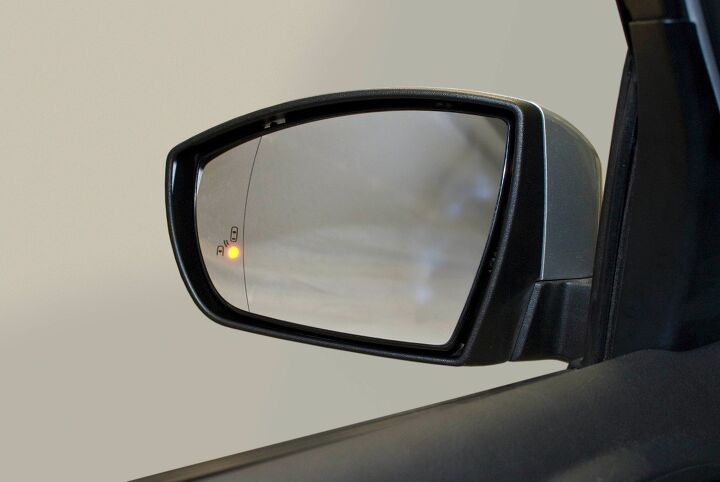





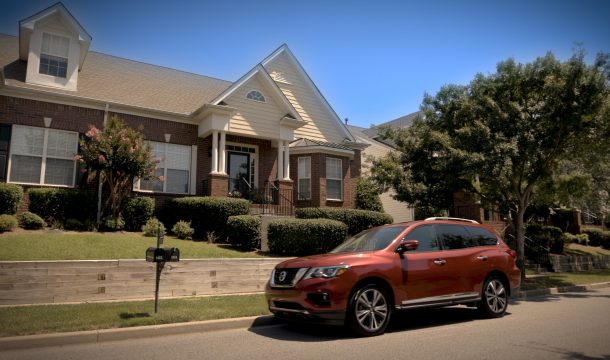


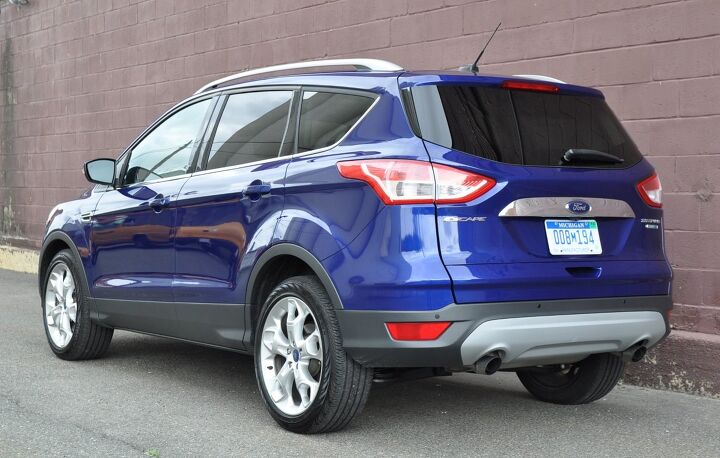

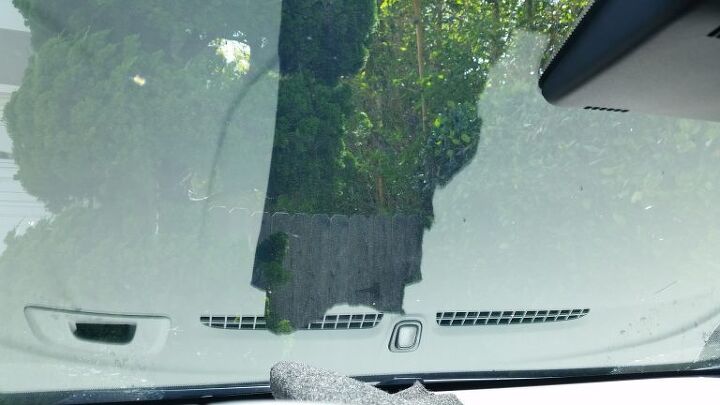

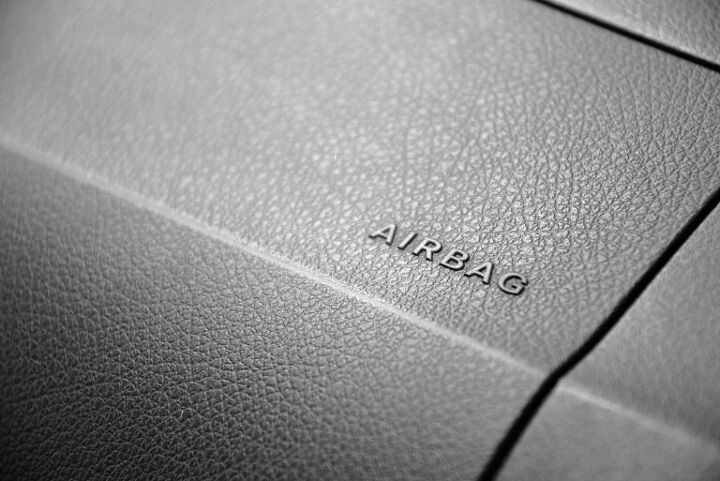
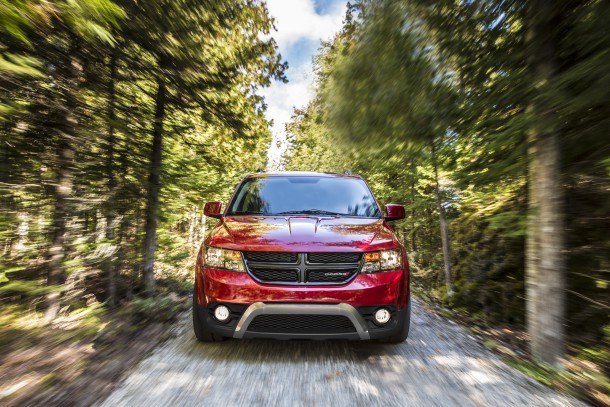
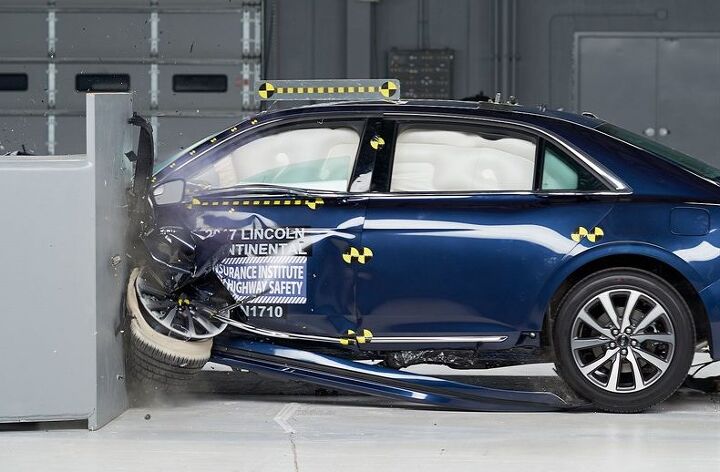

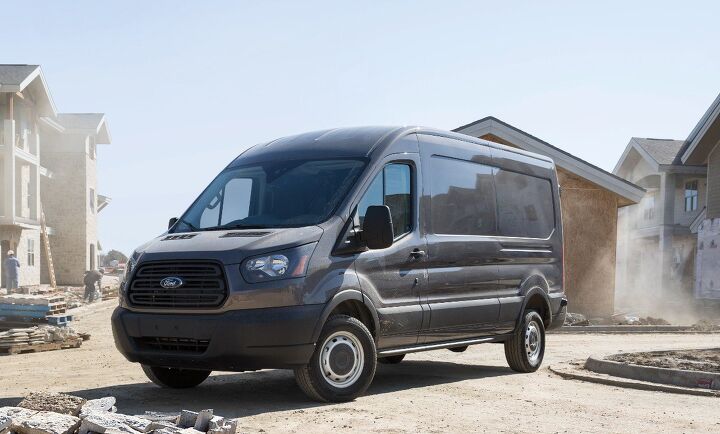
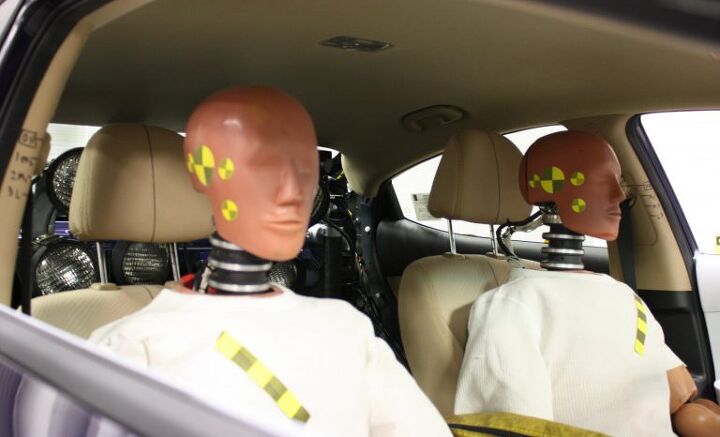


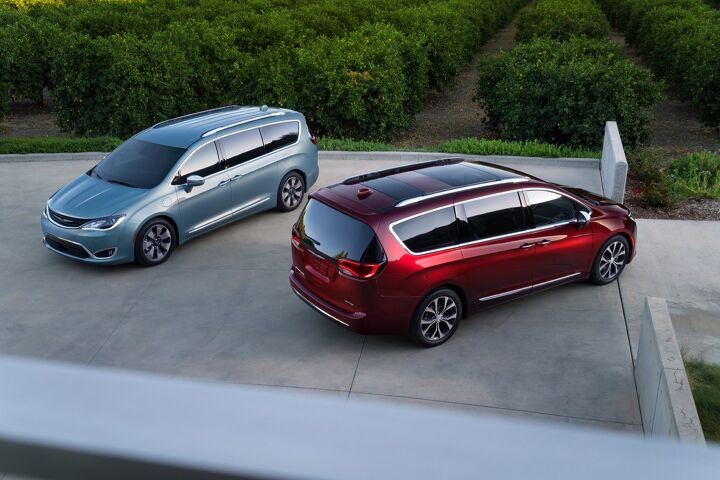



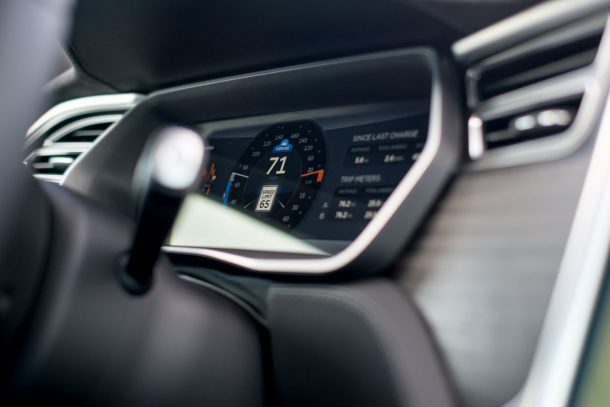



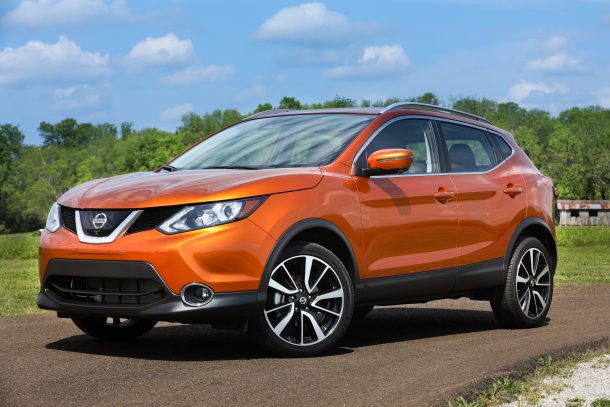







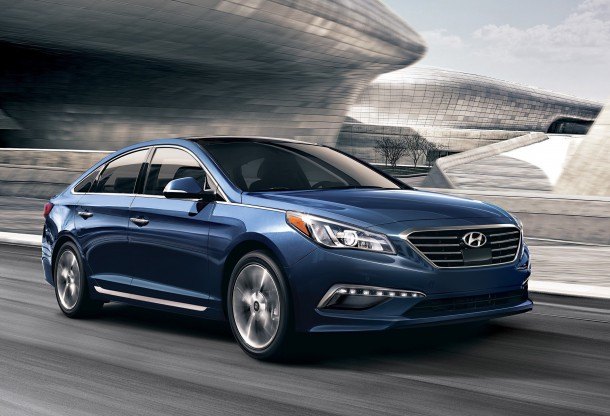



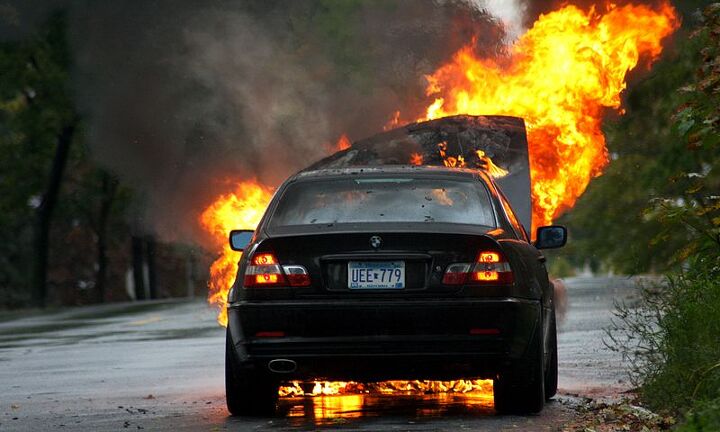











Recent Comments